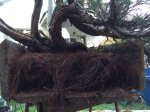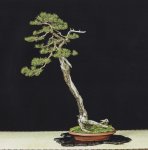Leo in N E Illinois
The Professor
- Messages
- 11,491
- Reaction score
- 23,853
- USDA Zone
- 5b
I need to find out if Kurt can bring in some Anderson flats, 40-50 dollar shipping really kills it for me, although I do really want some. I can make them out of metal, or even with a plastic bottom with metal sides, well actually I could make them out of pvc with un perforated sides. I think the andersons would be about perfect. i guess i should make some.
Hey @Waltron - if you think you would need 50 Anderson flats, just order them direct from Anderson - I like model 2408B - http://www.andersonpots.com/products/anderson-flats/
They come in stacks of 25, and minimum is 2 stacks. They also have other useful size pots, but it is a minimum that is more than the casual hobby person would not want to meet. Shipping is extra, but to Chicago, the shipping meant that the flats only cost between $6 and $7 each. Though my last order was 5 years ago, so I am not certain of today's prices.





